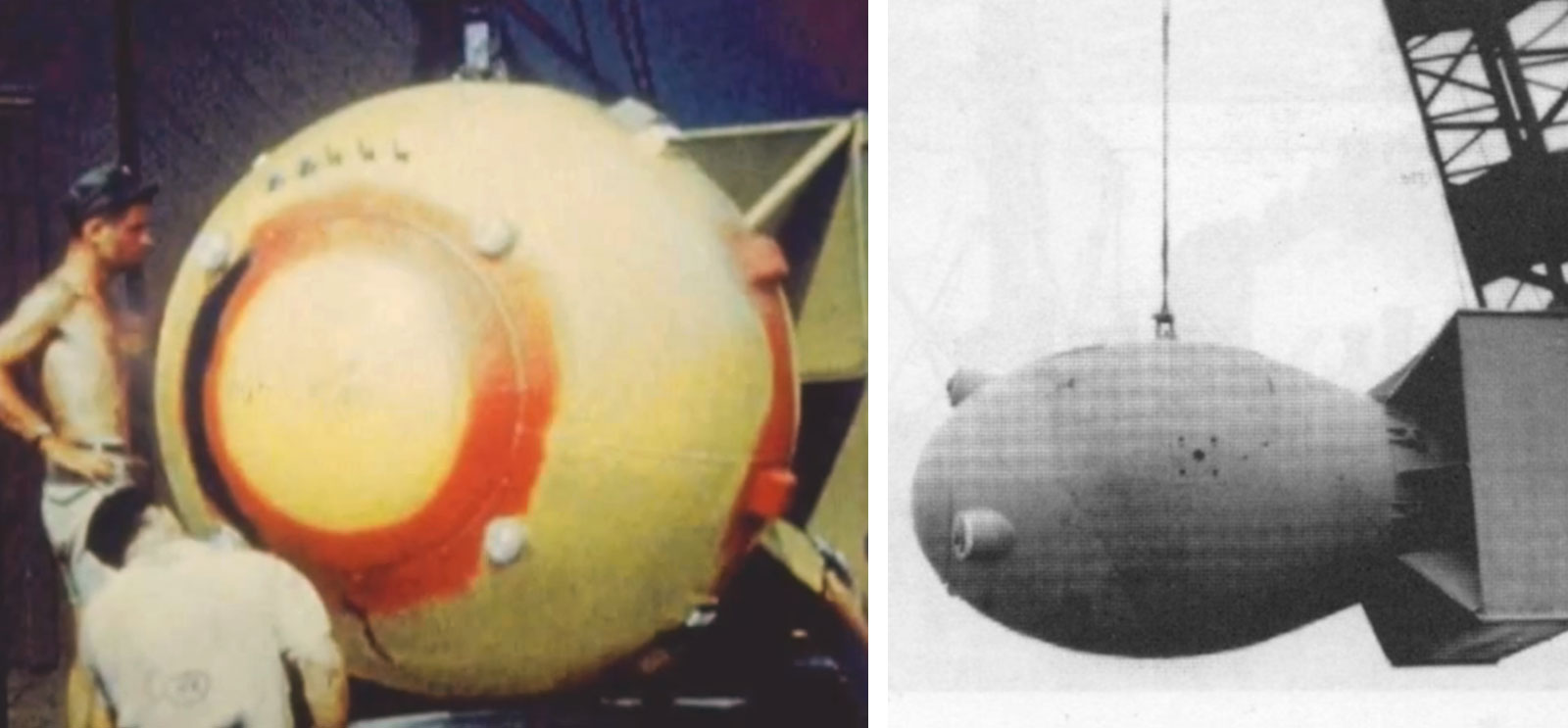
Photos of pumpkin bombs. (Department of Defense)
Physics professor Henry Frisch shares a piece of atomic history.
Seventy years ago, at 5:30 a.m. on July 16, 1945, Los Alamos scientists conducted the Trinity test, detonating a plutonium bomb nicknamed the Gadget in the New Mexico desert—a test run for Fat Man (the Gadget’s twin) and the uranium-based Little Boy. Dropped on Japan during World War II, these were the only two atomic bombs ever used in warfare.
Born in Los Alamos while his father and mother, physicist David H. Frisch and geneticist Rose E. Frisch, worked on the Manhattan Project, physics professor Henry Frisch has a memento of that history—a hunk of steel shell from a pumpkin bomb, given to him by John Coster-Mullen, author of Atom Bombs: The Top Secret Inside Story of Little Boy and Fat Man.
Pumpkin bombs were Gadget and Fat Man–style devices—sometimes inert, sometimes explosive—used to test the structure’s stability and the logistics of avoiding a crash during takeoff, dropping the bomb, and escaping the blast. Pumpkins contained no plutonium, says Frisch, so there was no danger of “dropping nuclear weapons on American soil” during practice.
Frisch keeps the pumpkin shell in his High Energy Physics building office, but he and others hope that it and other Manhattan Project artifacts will eventually be housed in a permanent display on campus, stewarded by the Enrico Fermi Institute.
[[{"type":"media","view_mode":"media_original","fid":"2696","attributes":{"alt":"","class":"media-image","height":"293","typeof":"foaf:Image","width":"500"}}]] A steel scrap from a Manhattan Project pumpkin bomb. (Photography by Maureen Searcy)
Updated 07.13.2015: The first paragraph of the original story incorrectly stated that the Gadget, Fat Man, and Little Boy were the only atomic bombs ever detonated. It has been corrected to say that Fat Man and Little Boy were the only atomic bombs ever used in warfare.
